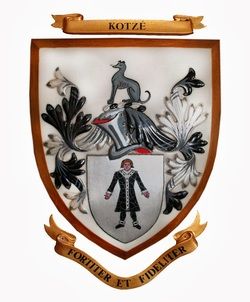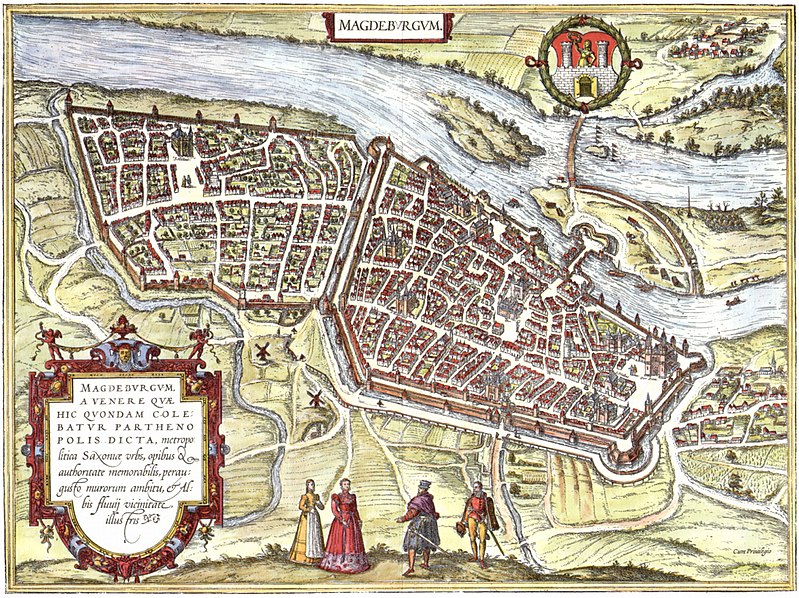| |
The earlier written records of the Kotzé family dates back as far as the year 1234. Family name records in Germany indicate the Family name is of noble decent.
It has been recorded that since 1234 and the following century Hermann Kotze/Kotzebue attained the dignity of Knighthood and was the owner of numerous valuable estates, and owned the castle of Ammendorf. It was since documented the family position and wealth continued into the 14th/15th century.
The name Hans Kotze (grandson of Hermann Kotze) was also documented for he was lord of several manors and seignories and another castle which he acquired in the year 1489, and which became the chief seat of the Head of the House of Kotzé.
The representatives of this family occupied various positions of trust and importance, including of course the military profession, as befitted the gentlemen of those days.
The spelling of the family name (in Africa) changes from Kotzee as reflected last in 1912 (in the document Master of the Supreme Court re: Johannes Albertus Kotzee) to finally Kotzé in 1916 (in the hand of Salmon Jacobus Petrus Kotzé).
We read of no less than four sons of another Hans Kotze, a descendant of the Hans above-mentioned, valiantly fighting under Conde against Alva in France and the Netherlands and eventually falling on the field of honour in 1567-8.
The family is first well documented when living in Saxony Germany
Note: Over Historic Periods/Migration and many Wars,(various spellings for this German/French/Dutch name) existed and Family members spread over the continent to Germany, USA, Canada, Australia, Africa, other
|
|
| |
The name of Kotze is not derived from any place or locality; and this may explain, as the “Urkunden Regesten” suggests, why the preposition “von” was not at first prefixed to the family name.
Until the early part of the 18th century, the name was written without the preposition “von” [“Urkunden Regesten der Herren v Kotze”, Magdenburg, 1866; 1-2].
The name Kotze(e) appears to be a contraction or abbreviation of KOTSASSE, that is “a small brother”.
The original signification of the word “Kotze” is a woollen covering such as a blanket or an overcoat or covering mantle. Hence the shield of the family coat of arms contains the full figure of a man, dressed in a long black woollen coat.
The coat of arms bears a man with arms outstretched (in silver) in official attire. On the helmet carries a sitting Greyhound with a golden necklace. The motto is “Fortiter en Fideliter”.
Which means: Bravely behold Fidelity
A member of this family, Jan Kotze of Königstein (also see) , Saxony, settled at Buyksloot near Amsterdam, where he was a burger and merchant. He is the Founding Father of the Kotze family in South Africa.
He was married four times, variously to:
§ Catharina Henneke (1677)
§ Anna Wichman
§ Hillegonda Boone (1690)
§ Henrina van Hoeting, 16 January 1704
On the 1st January, 1690 he married Hildegonda Boone (b 23 November 1662 d 22 August 1702), daughter of Dirk Boone, minister of the Church at Rotterdam, and of Beletje van Galen, sister to the famous Dutch admiral, Jan van Galen, who destroyed an English squadron in 1653 off Livorno. Some time after this marriage, Jan Kotze left with his wife for the Cape in the ship “Pampas“, and reached Table Bay on the 13th May, 1691. In the following year their son Dirk was born.
Jan Kotze went back to Europe in 1698, settled his affairs and returned to the Cape in 1701. In August of the following year his wife died, and in January, 1704, he remarried, his second wife being Hendrika van Hoeting. Out of this marriage two sons, Hendrik and Jan, were born.
This second marriage of Jan Kotze in January, 1704, is recorded as the first marriage that took place in the newly built and first Dutch Church in Adderley Street, Cape Town, to become known later when re-built simply as “Die Groote Kerk”. [from a book called Boerepioniers van die Sandveld]
REF: Dr Robin M Pelteret
|
|

